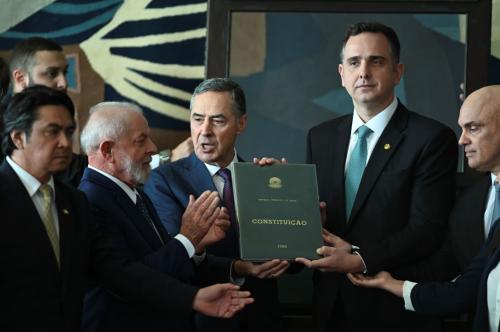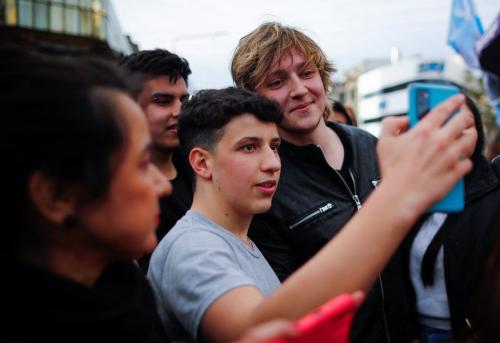In one form or another, nationalism has been the keynote of Brazilian attitudes toward the United States since the first Vargas presidency, 1930-45. In the Old Republic (1889-1930), the classic policy lines laid down by the Baron of Rio Branco, and warmly supported in Washington, amounted to a brotherly partnership of the Hemisphere’s two giants. The United States was progressively displacing Great Britain as the main purchaser of coffee, Brazil’s chief export commodity, and the main supplier of manufactured goods. Brazilian and American diplomats shared a somewhat supercilious view of Spanish America, apart from Argentina and Chile, as a melange of unstable ministates subject to frequent coups d’etat and rule by pompous caudillos. Both nations were wary of European imperial designs on Latin America.
Brazilians were not dismayed by the expulsion of Spain from Cuba. The Panama Canal was a boon to Brazil, greatly shortening the sea routes to the West Coast of North America. In World War I, Brazil, like the United States, maintained neutrality until 1917 and then declared war against Germany after several merchant ships were sunk by German submarines. In the Paris peace negotiations, the United States supported Brazil’s role as spokesman for all of Latin America in the newly launched League of Nations.
The Brazil of the 1920s seemed to show two faces to the world. The domestic face was a society and economy dominated by rural barons (even though no longer with titles of nobility): the coffee planters and cattle raisers of Sao Paulo and Minas Gerais. The external face was a highly educated diplomatic service, fluent in French and English, knowledgeable in international law and history, and sophisticated in the aristocratic and plutocratic cultures of the Great Powers of that era. This dichotomy was inherently unstable, especially with a rapidly growing population, including many new immigrants to the southern states from Italy, Portugal, Germany, and Japan. Light industry was growing rapidly, expanding the cities and creating an embryonic industrial proletariat, a base for organizing labor unions and a potential target for the Communist international. The “lieutenants revolt” of 1922 revealed widespread discontent with political and economic stagnation, not limited to the military officer corps. It opened a decade of sporadic rebellions in various states and regions against the established order. The lasting symbol of discontent was the historic “Long March” of military rebels, headed by Luis Carlos Prestes, who later became leader of the Brazilian Communist Party. This climate was further destabilized by the collapse of coffee prices in the Great Depression of 1929-33, reducing coffee export revenue from annual averages of over $68 million in the years 1924-29 to less than $30 million in 1930-34 and only $17 million in 1935-38.


